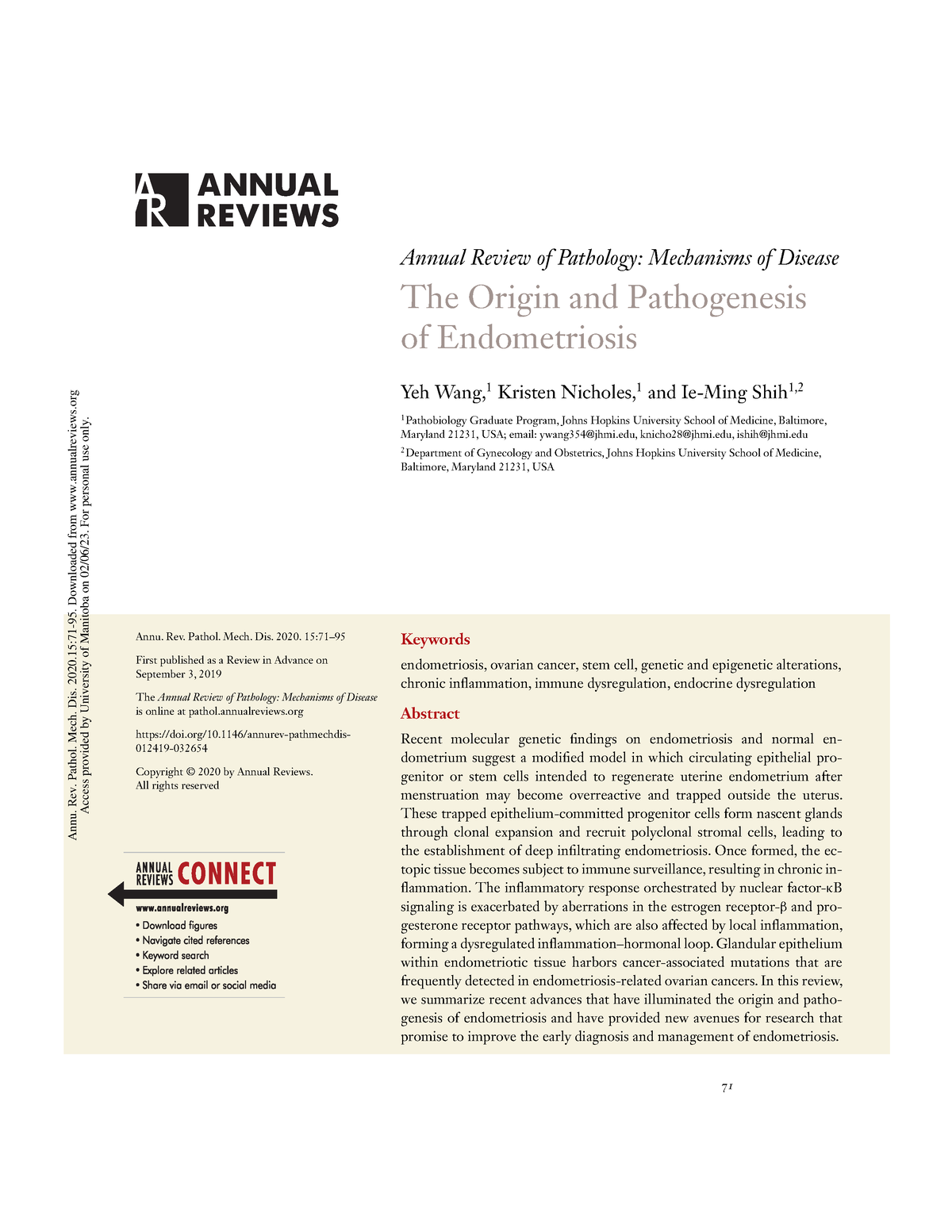分区,分区,分区:肝脏的房地产
IF 34.5
1区 医学
Q1 PATHOLOGY
Annual Review of Pathology-Mechanisms of Disease
Pub Date : 2025-10-13
DOI:10.1146/annurev-pathmechdis-042624-091820
引用次数: 0
摘要
肝脏是多种功能的中枢,包括代谢稳态、解毒和蛋白质合成。肝细胞是肝脏的主要主力,虽然看起来是同质的,但在小叶内表现出空间同一性,这反过来决定了基因和蛋白质的表达,并最终决定了功能。从门静脉三联体到中心静脉呈轴状,这种组织通常被称为代谢带。近年来,表达和功能的异质性现在被理解为远远超出肝细胞和代谢,包括非实质细胞和多种功能。虽然小叶通常被分为三个区域,但空间多组学技术揭示了一个更细致入微的画面,其中分区为折衷但功能强大的肝脏环境提供了一个坐标系统。我们总结了目前对肝脏分区的理解,因为它有助于劳动分工、损伤区室化和代谢途径的逐步安排,并讨论了这一框架对肝脏稳态、再生和疾病的影响。本文章由计算机程序翻译,如有差异,请以英文原文为准。
Zonation, Zonation, Zonation: The Real Estate of the Liver
The liver serves as a central hub for a diverse set of functions including metabolic homeostasis, detoxification, and protein synthesis. While appearing homogeneous, hepatocytes, the major workhorse in the liver, demonstrate spatial identity within the lobule, which in turn dictates gene and protein expression and, eventually, function. Presenting as an axis from the portal triad to the central vein, this organization has been conventionally referred to as metabolic zonation. In recent years, the heterogeneity in expression and function is now understood to extend well beyond hepatocytes and metabolism to include nonparenchymal cells and diverse functions. Although the lobule is conventionally divided into three zones, spatial multi-omics technologies reveal a more nuanced picture, where zonation provides a coordinate system for an eclectic but highly functional hepatic milieu. We summarize the current understanding of liver zonation as it contributes to division of labor, injury compartmentalization, and stepwise arrangement of metabolic pathways and discuss the implications of this framework for liver homeostasis, regeneration, and disease.
求助全文
通过发布文献求助,成功后即可免费获取论文全文。
去求助
来源期刊
CiteScore
62.60
自引率
0.00%
发文量
40
期刊介绍:
The Annual Review of Pathology: Mechanisms of Disease is a scholarly journal that has been published since 2006. Its primary focus is to provide a comprehensive overview of recent advancements in our knowledge of the causes and development of significant human diseases. The journal places particular emphasis on exploring the current and evolving concepts of disease pathogenesis, as well as the molecular genetic and morphological changes associated with various diseases. Additionally, the journal addresses the clinical significance of these findings.
In order to increase accessibility and promote the broad dissemination of research, the current volume of the journal has transitioned from a gated subscription model to an open access format. This change has been made possible through the Annual Reviews' Subscribe to Open program, which allows all articles published in this volume to be freely accessible to readers. As part of this transition, all articles in the journal are published under a Creative Commons Attribution (CC BY) license, which encourages open sharing and use of the research.

 求助内容:
求助内容: 应助结果提醒方式:
应助结果提醒方式:


